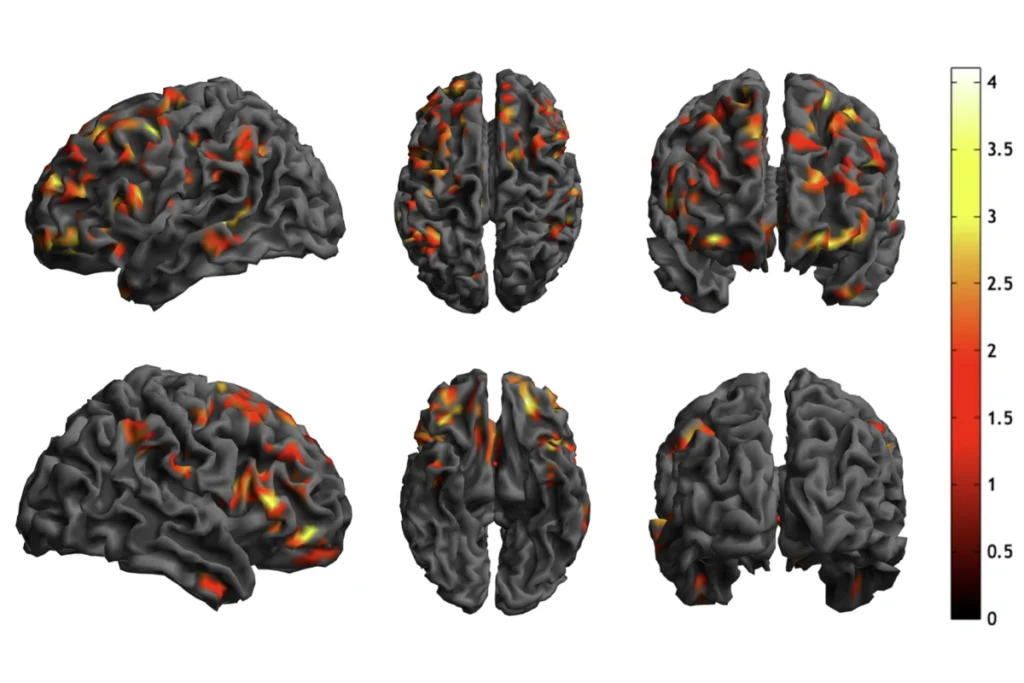Neighboring mutations in gene may spawn separate conditions
Two seemingly similar mutations in the SHANK3 gene have divergent effects on the brain and behavior.

Two seemingly similar mutations in the SHANK3 gene have divergent effects on the brain and behavior, according to a mouse study published 6 January in Neuron1. The findings may help explain why one mutation is associated with autism, whereas the other has ties to schizophrenia.
SHANK3 is on a growing list of genes linked to autism, many of which also have ties to other neuropsychiatric disorders. The new study serves as a reminder that compiling lists of risk genes is just the first step toward understanding these complex conditions.
“If we really want to model human disease — to study molecular, cellular and behavioral defects — we have to consider what kinds of mutations they are,” says lead researcher Guoping Feng, professor of brain and cognitive sciences at the Massachusetts Institute of Technology. “We have to painstakingly look at them individually.”
Roughly 1 percent of people with autism and 2 percent of people with both autism and intellectual disability have mutations in SHANK3. Studies in mice suggest these mutations have a wide range of effects, depending on where they land in the gene.
In the new study, Feng and his team engineered mice that carry one of two SHANK3 mutations. One replicates a mutation that scientists previously identified in two brothers who have both autism and severe intellectual disability. The other mimics a variant found in three brothers diagnosed with schizophrenia between the ages of 16 and 21.
The mutations are just 325 nucleotides apart — close neighbors in genetic terms. And both change the genetic code by a single letter in a way that effectively cuts short the SHANK3 protein. The protein ordinarily serves as a molecular bridge that links key parts of the signal-receiving ends of neurons.
Making sense:
In some instances, this type of ‘nonsense’ mutation triggers the cell to trash the incomplete genetic message, leading to a dearth of the protein. This is the case for the autism-linked mutation, the researchers found. However, the genetic message with the schizophrenia mutation somehow evades this degradation, resulting in an incomplete and potentially dysfunctional version of the protein.
“Even if you think that [two] mutations are doing the same thing, when you look carefully, that might not be the case,” says Thomas Bourgeron, professor of genetics at the Institut Pasteur in Paris, who was not involved in the study. “You have to be very careful.”
Mice with the autism-linked mutation have abnormally high levels of SHANK1 and SHANK2 — protein cousins of SHANK3 that perform a similar structural role. This raises the possibility that the mice ramp up production of these proteins to compensate for the lack of SHANK3.
To better understand the effect of the mutations, the researchers looked in the striatum, a brain region involved in motivation and action planning that does not express SHANK1 or SHANK2. Both types of mutant mice show abnormal communication between neurons in this region, as measured by readings of electrical activity in brain slices.
This abnormal signaling is also seen in the brains of pups with the autism-linked mutation, but not until adulthood in mice with the schizophrenia-linked mutation — timing that tracks with the onset of the conditions in people.
Refusal to frolic:
Mice with the schizophrenia-linked mutation show the abnormal signaling between neurons in the prefrontal cortex, a region that governs higher-order cognitive functions. Previous studies have implicated the prefrontal cortex in schizophrenia.
No such signaling defect in the prefrontal cortex exists in the mice with the autism-linked mutation. In these mice, the presence of SHANK1 and SHANK2 in this brain region may make up for the lack of SHANK3. By contrast, the mice with the schizophrenia variant make a faulty SHANK3 that might cause problems despite the presence of its cousins, Feng says.
The two mutations also lead to distinct behaviors in mice. For instance, juvenile mice with the autism-linked glitch play with their peers less often than controls do. (They don’t rub noses or chase each other as frequently, for example.) By contrast, mice with the schizophrenia-associated mutation show signs of overt dominance, often removing the facial hair and whiskers from their typical cage-mates.
Both mutants, and especially the ones with the autism-linked mutation, show signs of repetitive behaviors, which manifest as overzealous grooming that leaves skin lesions.
The findings hint at important differences between the mutant mice, but should be reproduced with larger numbers of mice and by directly comparing the mutants with each other, says Craig Powell, associate professor of neurology at the University of Texas Southwestern in Dallas, who was not involved in the study.
Feng is now examining the SHANK3 mutants in detail — for example, looking closely at when their unusual features arise during development — with the goal, he says, of gradually piecing together a better understanding of autism.
References:
- Zhou Y. et al. Neuron 89, 147-162 (2016) PubMed
Recommended reading

Okur-Chung neurodevelopmental syndrome; excess CSF; autistic girls

New catalog charts familial ties from autism to 90 other conditions
Explore more from The Transmitter

Karen Adolph explains how we develop our ability to move through the world

Microglia’s pruning function called into question

